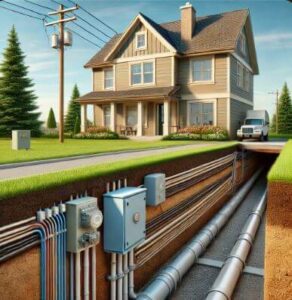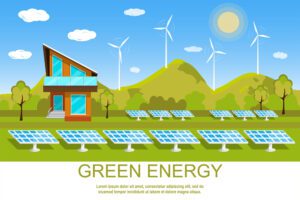The Alberta energy landscape in 2024 is marked by significant shifts, including warmer weather patterns, uncharacteristic lower natural gas prices, increased solar and wind power generation, and notably high electricity rates. With the Electricity Regulated Rate Option (RRO) hovering around 20 cents per kWh and average Fixed Rates at approximately 14 cents per kWh, homeowners face challenges distinct from the 10 cents per kWh rates seen two years ago. This comprehensive outlook offers strategies to navigate these changes effectively.
Impact of Warmer Weather on Energy Consumption:
- Reduced Heating Needs: The warmer December experienced in 2023 suggests a potential decrease in heating demands, which further reduces the prices of Natural Gas. Homeowners can adapt by recalibrating thermostats and optimizing heating systems to take advantage of the lower heating demand.
- Smart Thermostat Usage: Leveraging smart thermostats can lead to more efficient energy use, aligning with the changing climate. Explore smart thermostat options for winter energy savings: Smart Thermostat: A Guide to Winter Energy Savings.
Natural Gas in Canada’s Energy Mix:
- Current Natural Gas Market: The lower-than-expected natural gas prices due to high storage levels provide a temporary reprieve in heating costs.
- Strategic Use of Natural Gas: Stay informed about market trends and explore Fixed-Rate contracts to protect against future price changes. An easier way to keep abreast of market information is to subscribe to the Muvar’s Bill Savers Club where members get regularly inform of market news and trends.
The Rise of Solar Energy:
- Increased Solar Generation: Solar energy is becoming a key player in Alberta’s energy sector. With more government incentives, homeowners should consider the long-term benefits of solar installations.
- Exploring Solar Options: Assess the feasibility of solar panels and provincial incentives. For more information, check out: What You Need to Know About Solar Panels.
Tackling High Electricity Costs:
- Current Electricity Prices: With the RRO rates at approximately 20 cents per kWh and average fixed rates around 14 cents per kWh, electricity costs are becoming a significant concern for homeowners and we expect the rates to remain high through 2024.
- Strategies for Reducing Electricity Costs:
- Energy-Efficient Appliances: Invest in energy-efficient appliances to reduce electricity consumption.
- LED Lighting: Replace traditional bulbs with LED lighting for lower energy usage.
- Energy Audits: Conduct home energy audits to identify and address inefficiencies.
Sustainable Energy Practices
- Home Energy Efficiency Measures: Implement energy-efficient practices in your home, such as upgrading insulation, using LED lighting, and installing energy-efficient appliances.
- Sustainable Energy Practices: Engage in sustainable actions, like using renewable energy sources and reducing overall energy consumption. This could include small but impactful changes like lower water usage and adopting smart energy systems. Smart Meters: Revolutionizing Home Energy Management and Costs.
Navigating the New Year:
- Staying Informed: Keep updated with the latest energy trends, regulatory changes, and technological advancements in Alberta’s energy sector. You can subscribe to the free Muvar’s Bill Savers’ Club where members are regularly kept informed of the latest maket news and trends.
- Exploring Alternatives and Incentives: Regularly review alternative energy options and government incentives that could make renewable energy sources more accessible and affordable. This includes keeping an eye on developments in wind and geothermal energy, alongside solar power.
- Impact of Carbon Tax to Homeowners: As Canadian homeowners face the challenges of high electricity rates and evolving energy dynamics in 2024, another key factor to consider is the impact of the federal carbon tax. As many Canadians (including Alberta homeowners) recived some refunds in 2023, , They still stand to financially benefit from this tax in 2024. The Carbon Tax is designed to reduce greenhouse gas emissions by incentivizing low-carbon alternatives. Businesses subjected to the tax won’t receive refunds, while lower-income households stand to benefit the most, with higher-income households also seeing some gain gains. In 2024, this tax would add another layer to the complex decision-making process for homeowners in Alberta regarding energy consumption and energy costs.
Conclusion:
As we step into 2024, Canadian homeowners are positioned at the forefront of an evolving energy landscape. By understanding and adapting to these changes — warmer climate patterns, fluctuating natural gas prices, and the rise of solar energy — homeowners can effectively manage their energy consumption, reduce costs, and contribute to a more sustainable environment
For ongoing updates and detailed information, continue to visit muvar.ca. This guide aims to empower homeowners with the knowledge and tools needed to make informed decisions in a high-cost energy environment.





